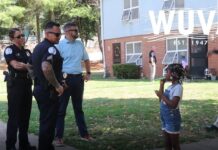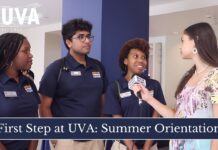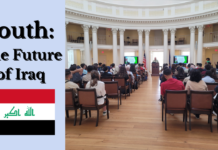Alternative Spring Break has become a very popular organization around the country, giving students an opportunity to spend their vacation volunteering in other communities. But are these one-week trips meant to benefit the local communities or the volunteers? We profiled ASB at UVA to understand both its mission, and where critics say it falls short.
Reporter/Editor: Yahya Abou-Ghazala Producer: Estee Keith
—
Script
YAHYA: Every year, about 320 UVA students go on an Alternative Spring Break trip, where they spend one week volunteering in communities across the US or internationally. But in recent years these trips have come under intense criticism. We decided to take a closer look at ASB to find out why people are saying these trips aren’t effective WUVA INTRO YAHYA: ASB offers a variety of different one week service trips, with options in Housing, Human, or Environmental Services. Courtney Halle is a third year that went on a Human Services trip to Nicaragua, where she volunteered in a public health clinic for local communities. She says her time on the trip is unforgettable. CAROLINE: “I still love talking about this trip because I had such a great time and want people to go on these trips because you do get the service but you also get the cultural experience which I think you know a lot of kids in college want that, they want to learn about the world and help with world issues” YAHYA: This combination of service and experience is what makes ASB so appealing to college students. ASB President Alec Tekamp says these projects are meant to serve both the volunteers and the people they are there to help. ALEC: The goal of the trips is to want to serve a community and make a lasting impact there. At the end of the week, i would hope that the volunteers would have a new sense of their purpose in their own communities that they know how important a role they can play in helping to solve these grandeur problems in our country and the whole world. YAHYA: These trips, which can cost anywhere around $400-$1500 dollars, are a part of a larger industry commonly known as “Voluntourism,” where students travel to see the world with the purpose of volunteering. This mixture of volunteering and tourism is estimated to be worth around $2 billion dollars, totalling up to 10 million volunteers a year. YAHYA: But if you’re thinking of going on one of these trips, Anthropology Professor Richard Handler would tell you quite simply— HANDLER: Don’t Go. Don’t pretend that you can go elsewhere and fix other people’s problems. You’re in college. Take the opportunity to learn from people who have studied the historical and sociological constructions of these problems YAHYA: The trips are based on the idea that it fosters self-awareness and reflection for the volunteers. But critics argue that such a short trip only addresses the symptoms of poverty rather than the causes. HANDLER: Students can walk away from that thinking they’re ‘WOKE’ without ever having learned…i don’t care if you’re ‘WOKE’ i care that you know how these political and economic systems work. YAHYA: So then that raises the question: are these one week trips really meant to impact the student or the communities? CAROLINE: I have this like internal battle, because I think it’s better for the students in all honesty, and I don’t think that’s necessarily a bad thing because you really are gaining these really valuable experiences. YAHYA: it’s clear that there is much debate to be had surrounding the one-week volunteering structure, and ASB is taking strides to address these critiques. With trip listings for Spring Break 2019 already available, there is a lot to consider before you sign up.
















